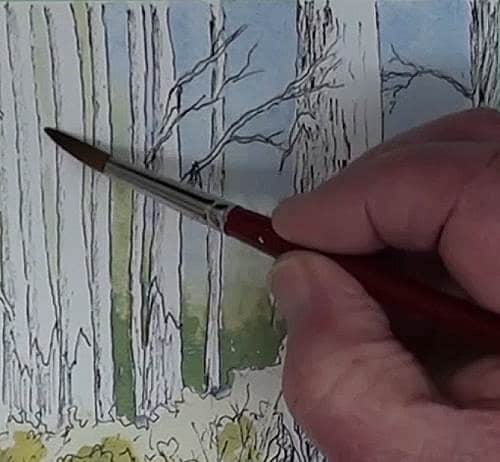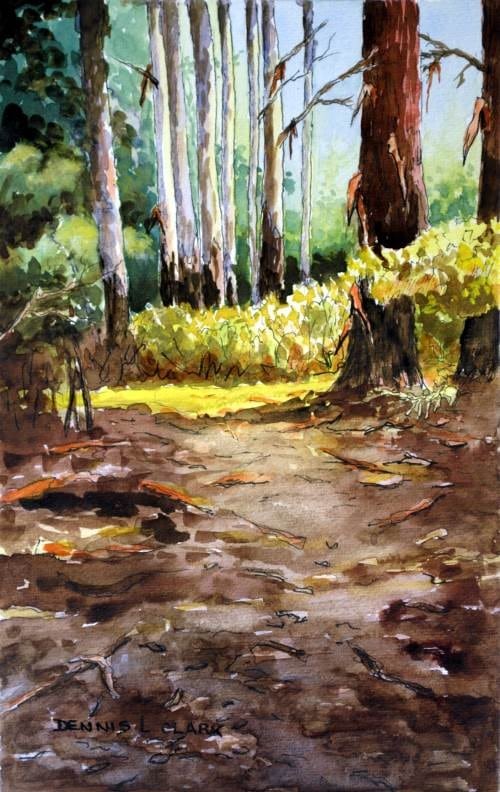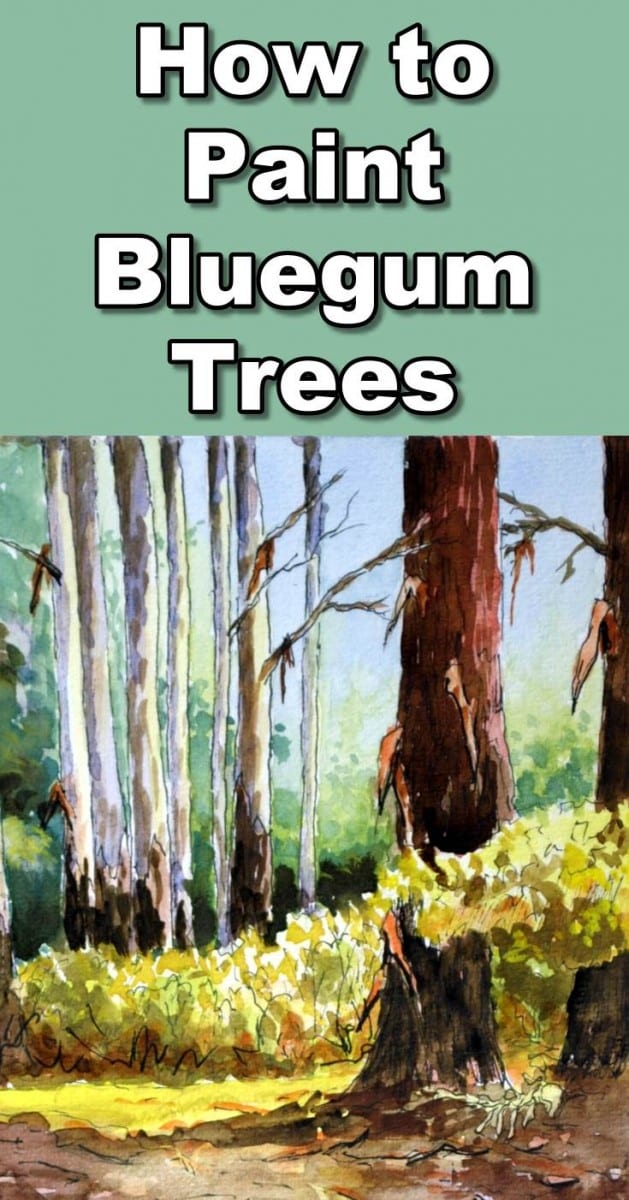Short Class Video
Class Tutorial
Sketching the basic outlines

Sketch out the absolute basic outlines in pencil for your planning. After that, finalize all the lines with a black waterproof pen. It does not matter which make you use. Any nib size from 0.1 to 0.5mm will do, depending on the effect you want to achieve, and also don’t try to draw all the lines perfectly. We are going to work in a sketching way only.
The bark peels off of these trees with a characteristic fold down attitude. In a sketching manner draw in the bark roughness and don’t touch the area of the overlapping branch.
Sketching the distant trees

Roughly indicate the shadow areas. The main light is shining from the right-hand side. Add some branches to make the scene look more natural.
Sketch the ground level shrubs

Very loosely, add the shrub outlines in a squiggly fashion, making sure that this is never a straight line. Indicate some of the shadow areas as well as the tops of other shrubs to indicate volume and distance. Edge off the tree on the very right hand side and finish the shrubbery leaves.
Sketch the foreground

The foreground is a large mess of tangled twigs and fallen bark. Pick out some of the salient ones in the foreground that will show up in the sunlight. Remember that they get smaller and close together as they recede into the distance. Don’t get too carried away in trying to draw in too much bark.
Paint the focal point

As we don’t want to lose the sunlit area, we will begin with this first. This area is the main focal point of the painting. Use very light colors here to start off with. Paint the darker green above this so as to emphasize this sunlit area. We need to indicate contrast of the light against the light.
Paint the sky

Don’t paint the sky too dark and let it merge in with the green lower down to enhance a hazy effect.
Paint the shrubbery

The shadows here are Olive green and darken up towards the base for the deepest shadows. Be careful not to lose the sunlit tops.
Paint the deep shadows

Mix up a very dark Green using Viridian and Burnt Sienna for the very deep shading, and also add a little touch to the distant trees in the center of the painting.
Paint the main trees

The main trees receive a wash of Burnt Sienna with a touch of Blue. Darken up the bark in the shade of the overhanging branch and then on the trees. Don’t lose the pen and ink lines. We need to keep them visible as the painting is basically a line and wash.
Paint the distant trees

Add a light blue-purple wash to the shadow side of the trees. Add the shadows and fill in with some light Cadmium Yellow. Here and there paint in a light wash of Burnt Sienna. Warm up the deep shadows on the left hand side with some Burnt Sienna as this adds depth to the closer trees.
Paint the foreground

Paint the sunlit areas with Yellow Ochre and a touch of Burnt Sienna. And the shadow with a blue-grey mix of Blue with a small touch of Burnt Sienna. The closer shadows are much darker.
Paint the loose bark

The color here for the loose bark is a lot of varying tonal ranges of Burnt Sienna and Ultramarine Blue. Add the initial glazes and carefully build up the impression of lots of bark with a series of short strokes in varying angles. The shadow area is very much lighter towards the focal point. Add a few areas of light Burnt Sienna near the top end for some sparkle. We can now finish off with some explicit pen and ink marks to emphasize the main pieces of bark.
Final painting

Click the button below to view the real time follow along version of this class:
Pin Me

